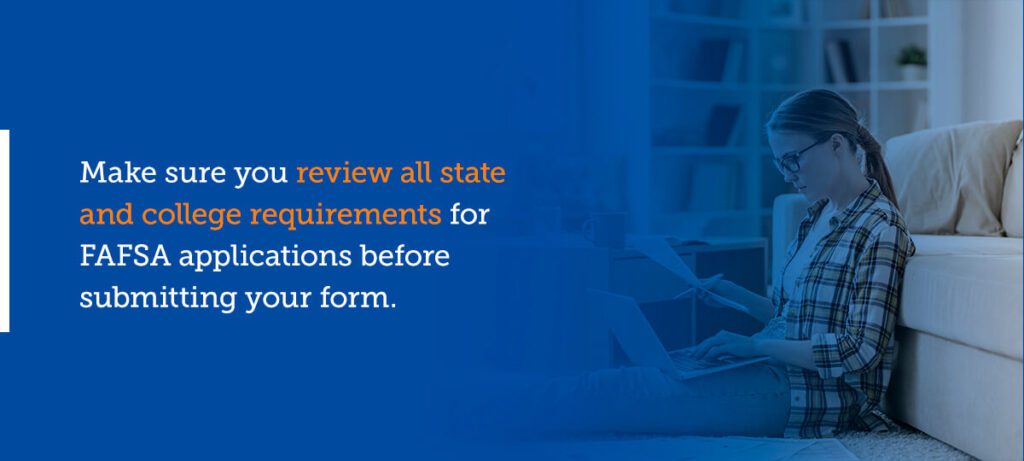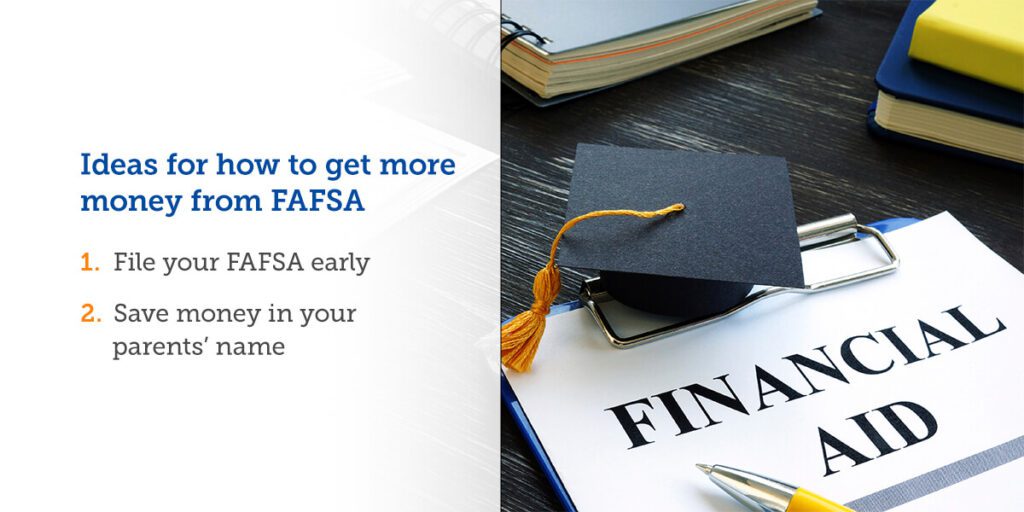Nowadays, going to college without financial aid is a luxury few can afford. At the same time, attending college can set you up for financial success in the future, so it is an investment-worthy endeavour. Fortunately, financial assistance can help get you there. If you require financial aid for medical school, continue reading our guide below.
Where to Start Your Search for Aid
Considering why you should seek out financial aid for medical school is helpful to an extent, but you also need to know where to look, when to apply, how to go about applying and what documents you need to do so. Here is some information to help you get started on how to get financial aid for medical school.
1. Fill Out the FAFSA Form
The first place any medical student needs to look when seeking financial aid is the Free Application for Federal Student Aid program, commonly known as FAFSA. Filling out the FAFSA form is a prerequisite to receiving federal grants, loans and work-study programs.
The college you are applying to or attending will use the information you provide in the FAFSA form to determine how much federal aid you are eligible to receive. The program determines that amount based on your dependency status — whether you support yourself financially or are dependent on parental financial support.
If you are a dependent, your family’s assets and income will influence how much aid you are eligible to receive. These two factors calculate your expected family contribution (EFC) toward your schooling. Then, your college calculates your cost of attendance (COA) and subtracts that amount by your EFC to determine the exact amount of aid you will receive.
To continue receiving aid through FAFSA for medical school, you need to reapply each year in case your family’s financial situation changes.
2. Be Aware of Deadlines
The federal deadline for FAFSA applications is June 30 each year, but you can usually apply as early as October 1 of the previous year.
That said, each state and college has its deadlines and requirements with FAFSA forms. Therefore, you will want to be aware of other deadlines and requirements as you go through the FAFSA process. For example, to qualify for priority consideration in Connecticut, you should submit the form before February 15.
Moreover, some colleges may require additional documents with your FAFSA application. For example, AIHT Education requires students and parents of students under 24 to obtain an FSA ID, which you use to log in to Department of Education websites.

Make sure you review all state and college requirements for FAFSA applications before submitting your form. If you miss one, you may have to re-submit your application, which could cause delays before receiving your aid. If you need to re-submit your FAFSA application, the deadline is September 10.
How to Apply for Medical School Aid
Applying for medical school aid takes time, effort and a little attention to detail. However, it is absolutely worth the investment in your future career. Here are some tips on how to apply for medical school aid:
1. Completing the FAFSA
The first step to completing the FAFSA is creating an FSA ID with a username and passcode. This ID will allow you to fill out, sign and submit your FAFSA form electronically.
After creating your FSA ID, the next step is to review and gather all of the documents and information you need to fill out the FAFSA form:
- Your IRS W-2 or your parents’ tax return from two years prior to the current academic year
- Your Social Security number or your parents’ Social Security numbers if you are a dependent
- Your driver’s license if applicable
- Records of any untaxed income
- Bank account and financial investment information
Be sure to make copies of any documents you need to include — you will not need to include original copies. Additionally, ensure you have the school code of the colleges you are applying to on your FAFSA application so they send your results to the right place.
2. Investigating Aid Sources
FAFSA allows you to receive aid through Stafford loans, which are direct subsidized or direct unsubsidized loans provided by the Department of Education. Additionally, you can use FAFSA to apply for certain programs. It is a good idea to investigate your options — start with aid sources you do not have to pay back, including grants, scholarships and work-study programs.
If you have any specific questions about whether your college will accept a certain grant or scholarship, be sure to reach out to their financial aid office for further clarification.
3. Receiving Your Aid Offer
You will receive your aid offer in at least two disbursements, usually once per quarter, trimester or semester. If your school does not use traditional terms, they will likely give you your grant or loan money at the start and middle of your academic year or program. Most schools automatically apply your grant or loan money to your tuition and residency fees.
Some conditions may apply if it is your first time taking out a federal student loan. For example, your school may wait to give you your aid offer until 30 days have passed from your first day of enrollment. Students taking out federal loans for the first time must also go through entrance counseling. Entrance counseling ensures students understand the terms and conditions of their loan and their rights and responsibilities in terms of repayment.

Here are ideas for how to get more money from FAFSA:
- File your FAFSA early: Although you have until June 30 to file your FAFSA application, many states award various grants and loans on a first-come, first-serve basis. By being proactive with your FAFSA application, you will increase your chances of receiving better financial aid awards. Moreover, students who file their FAFSA forms early may qualify for more aid directly from the FAFSA program.
- Save money in your parents’ names: FAFSA assesses money saved in your parents’ names at a lower percentage than money saved in your name. As such, you can lower the impact your savings have on your aid offer by asking your parents to hold on to that money for you.
AIHT Financial Assistance Programs
In addition to the direct subsidized, unsubsidized or PLUS loans through FAFSA, AIHT also has several other financial aid programs you can use. These include:
- Veteran’s Educational Benefits
- Department of Labor programs
- Private loans with Meritize for sonography programs
- Interest-free tuition payment plans
Visit Our Financial Aid Page for More Information
If you are seeking financial aid and want to enroll in one of our programs at AIHT Education, visit our financial aid page! We also welcome you to contact us to learn more about our financial assistance programs at AIHT Education.




